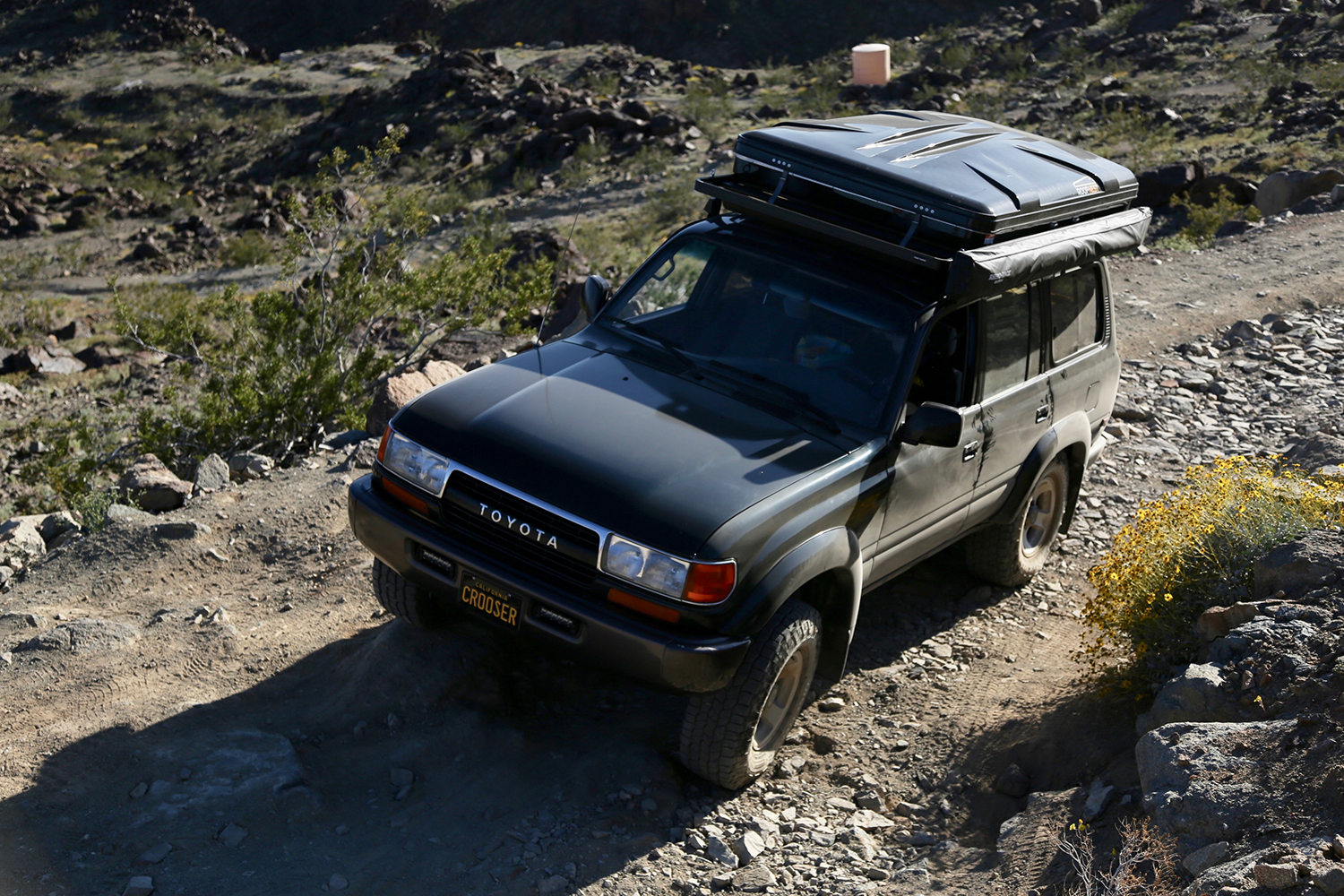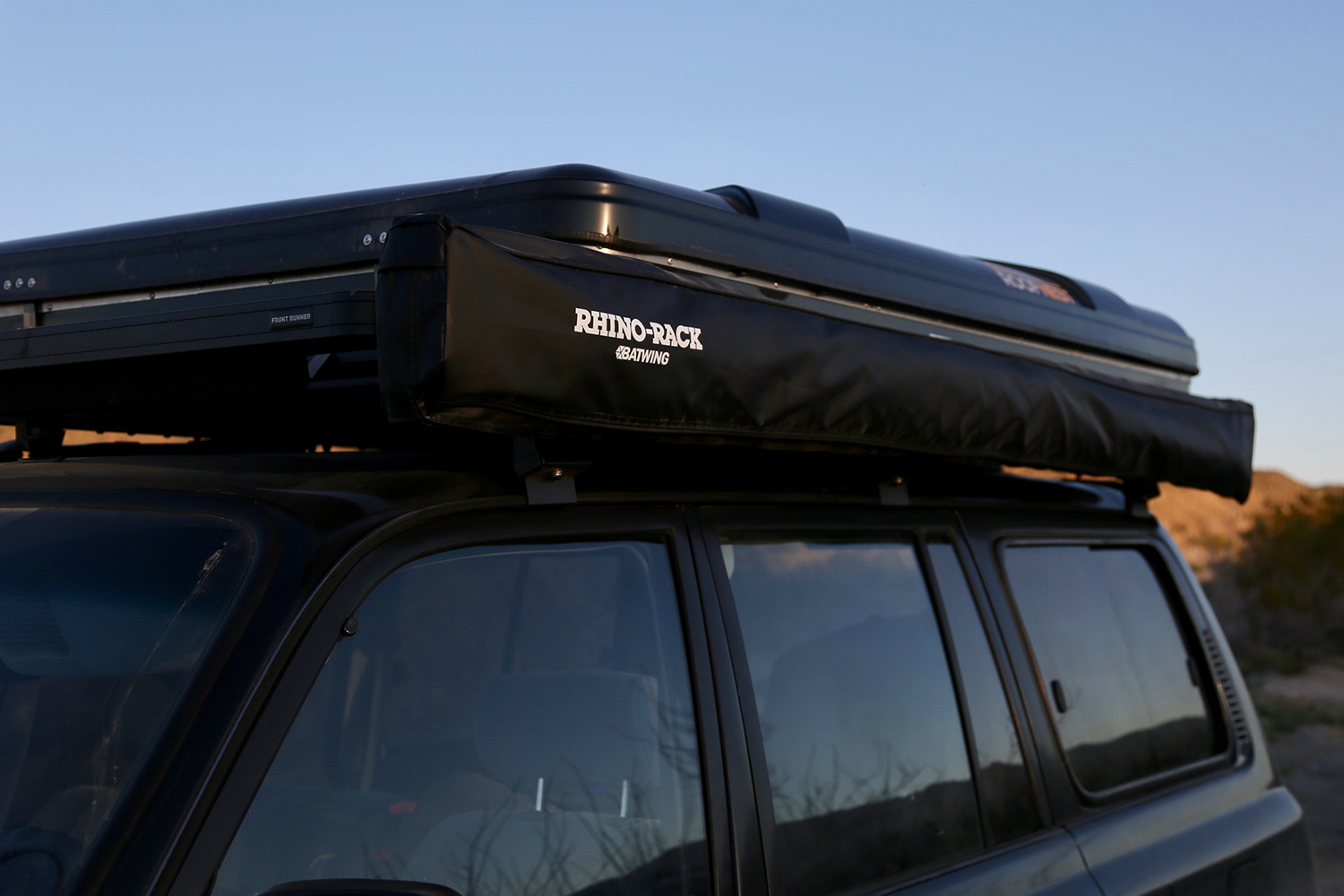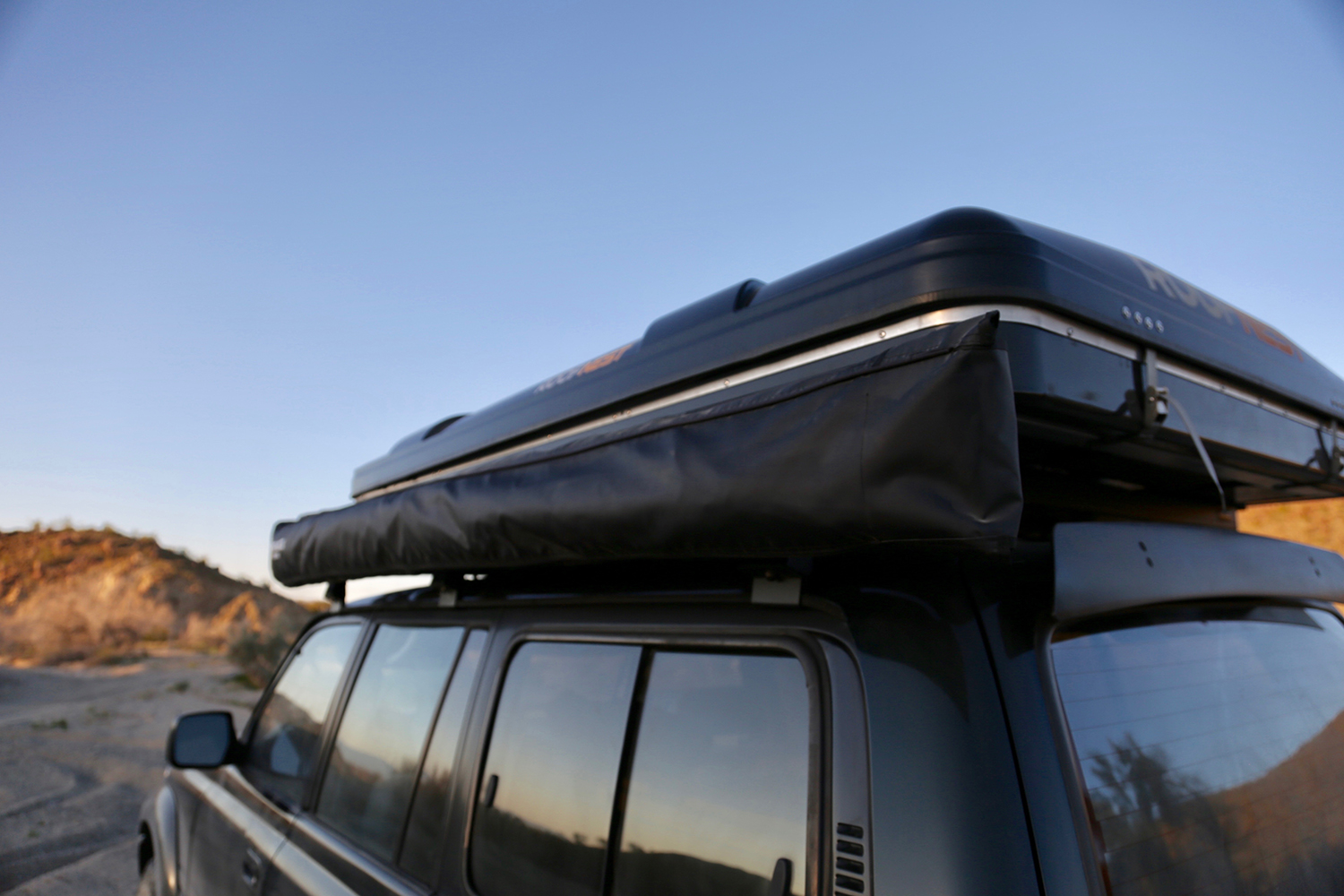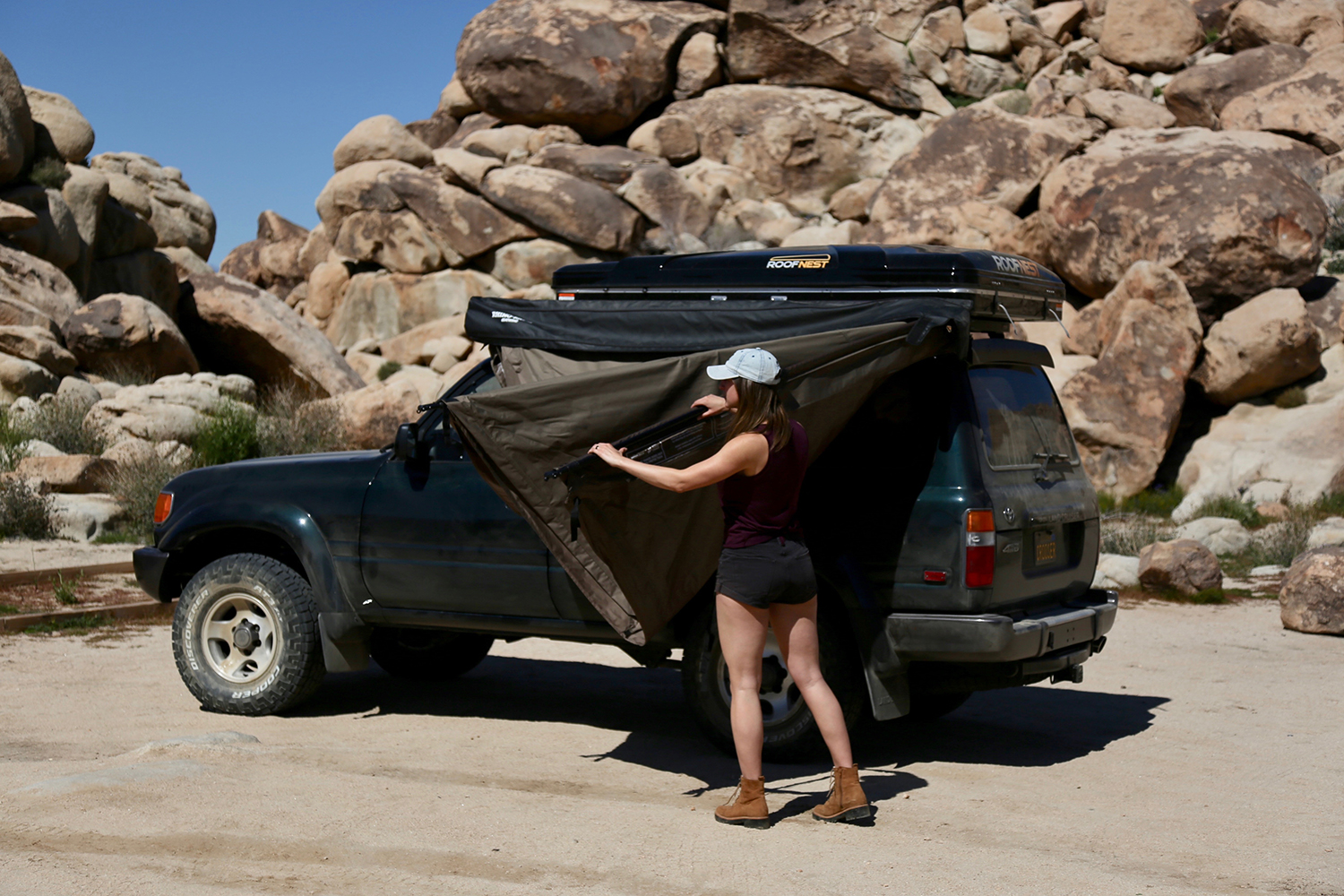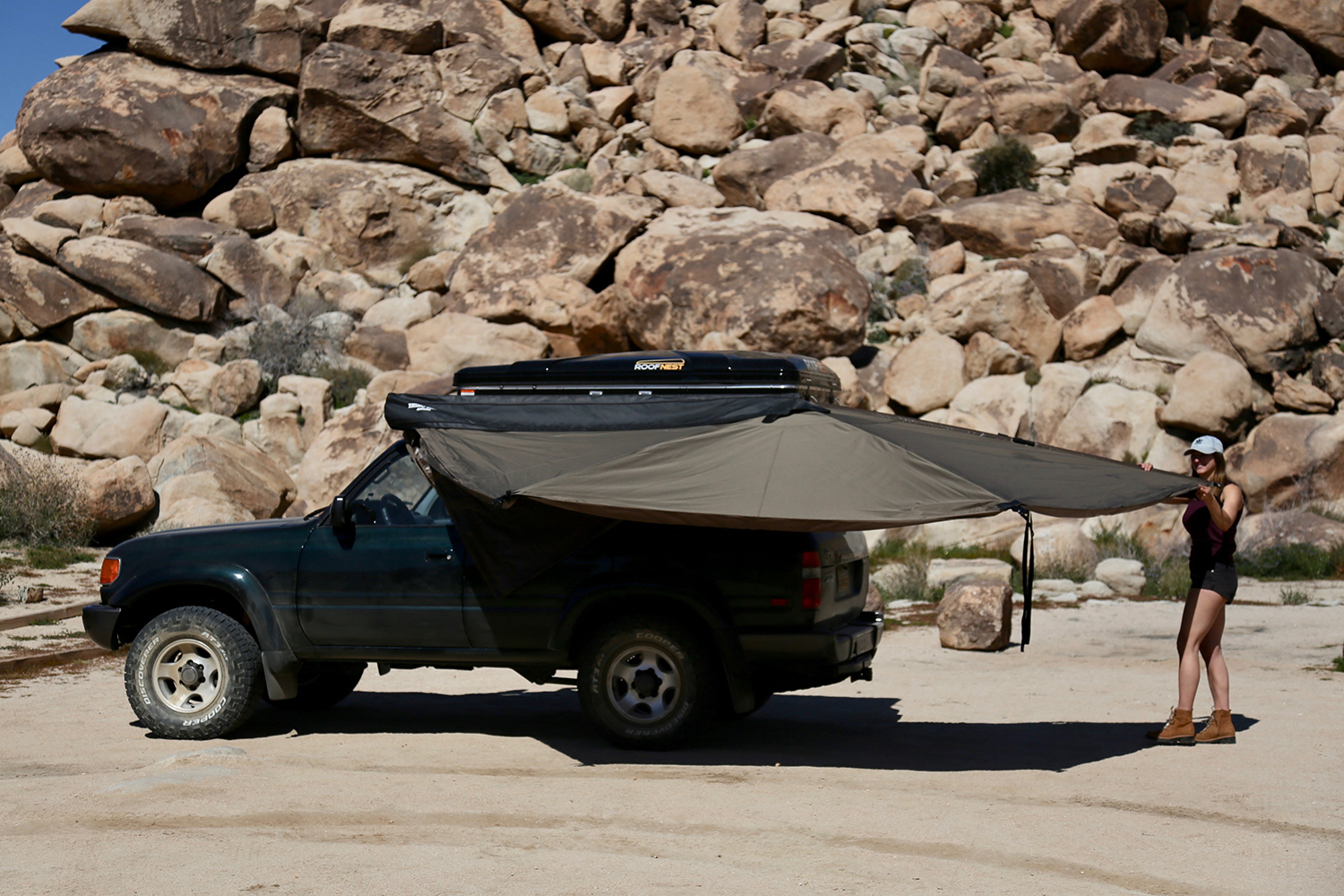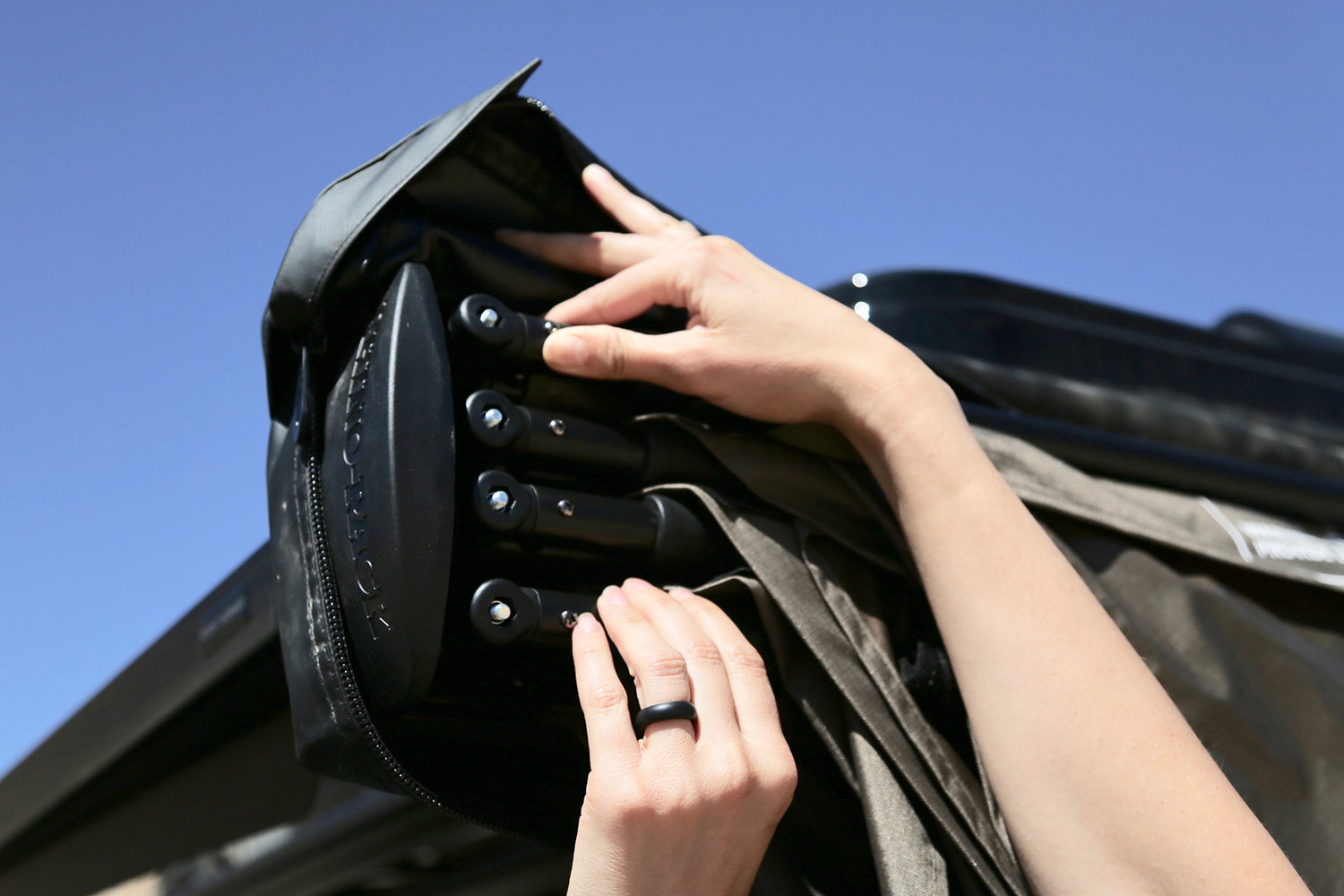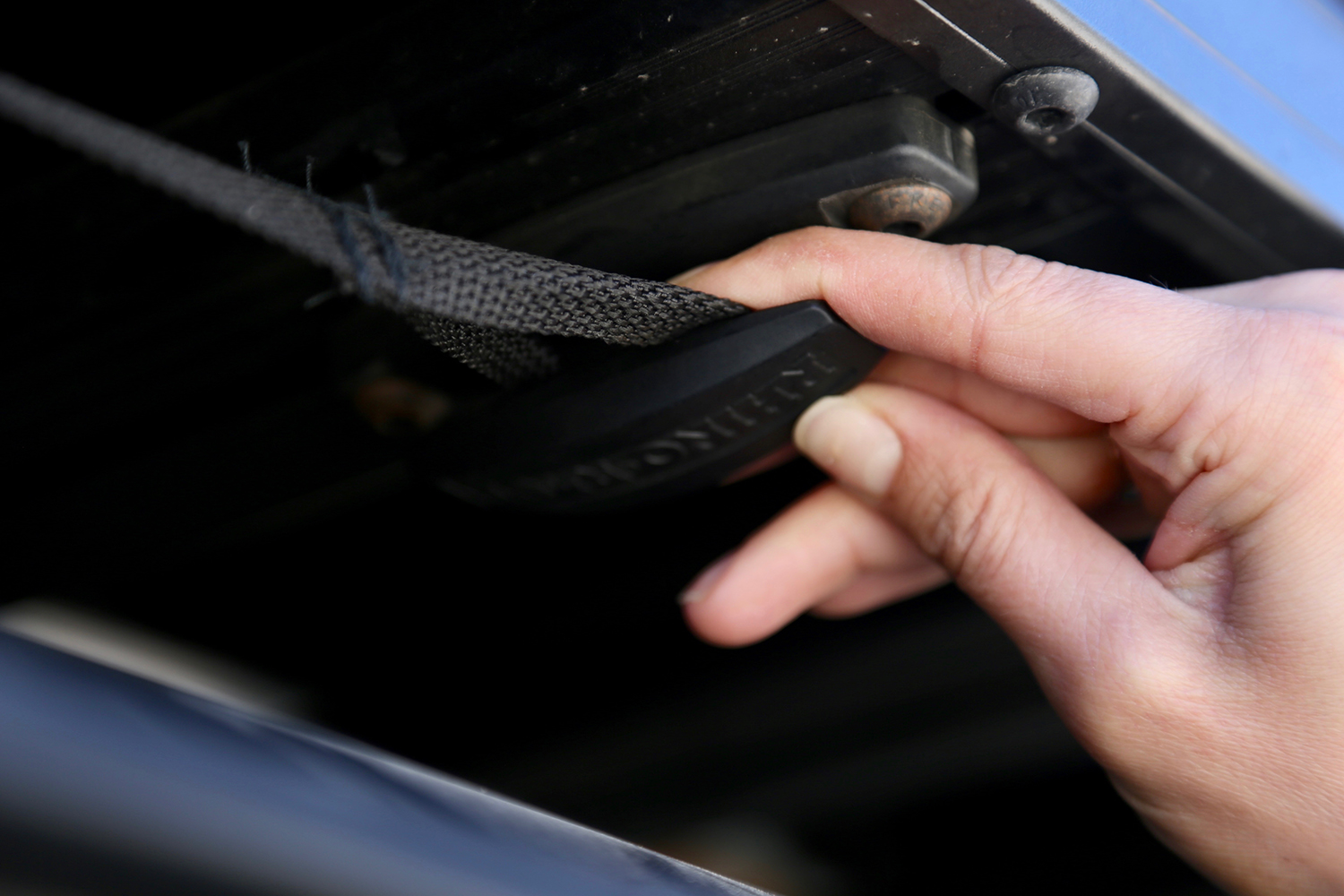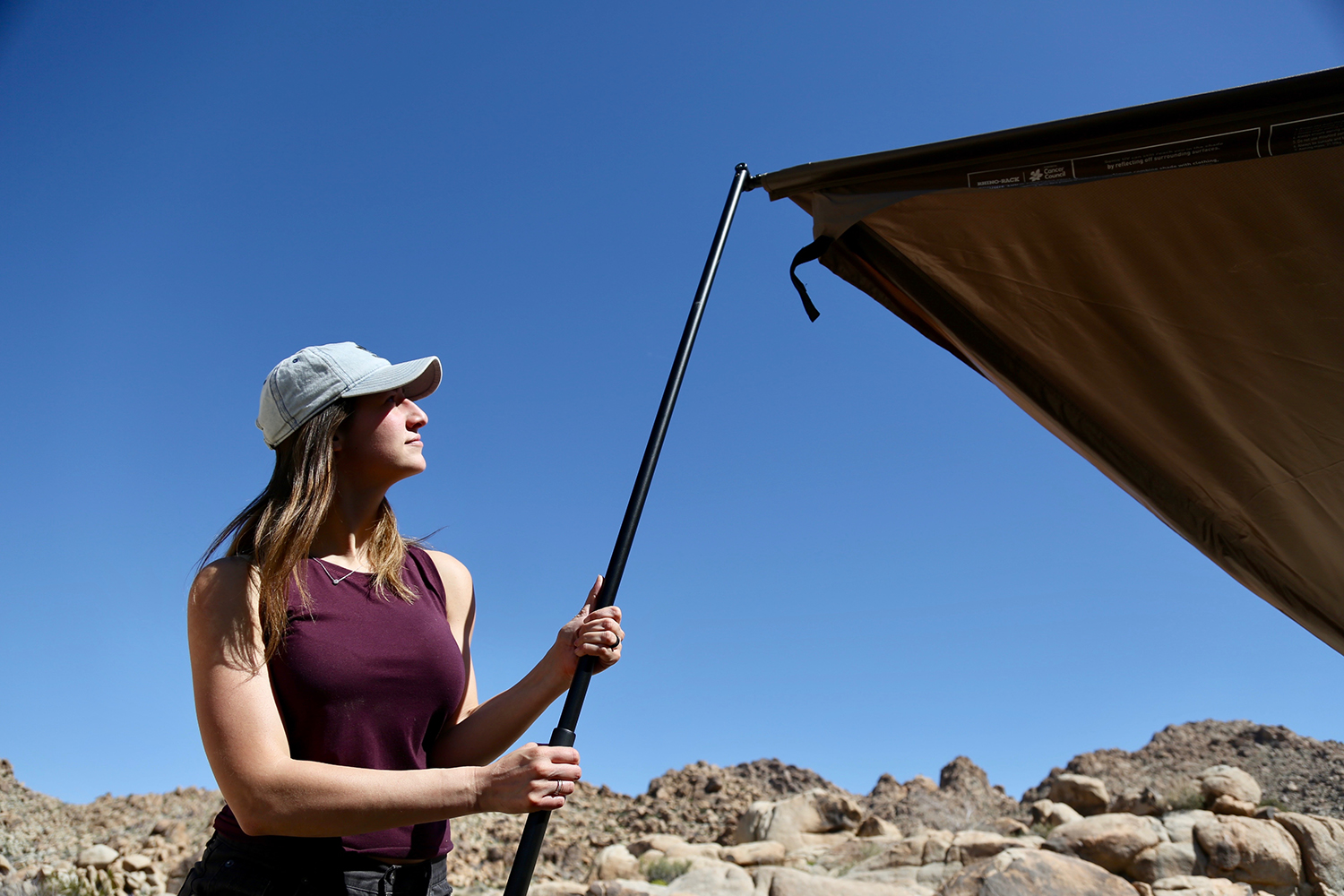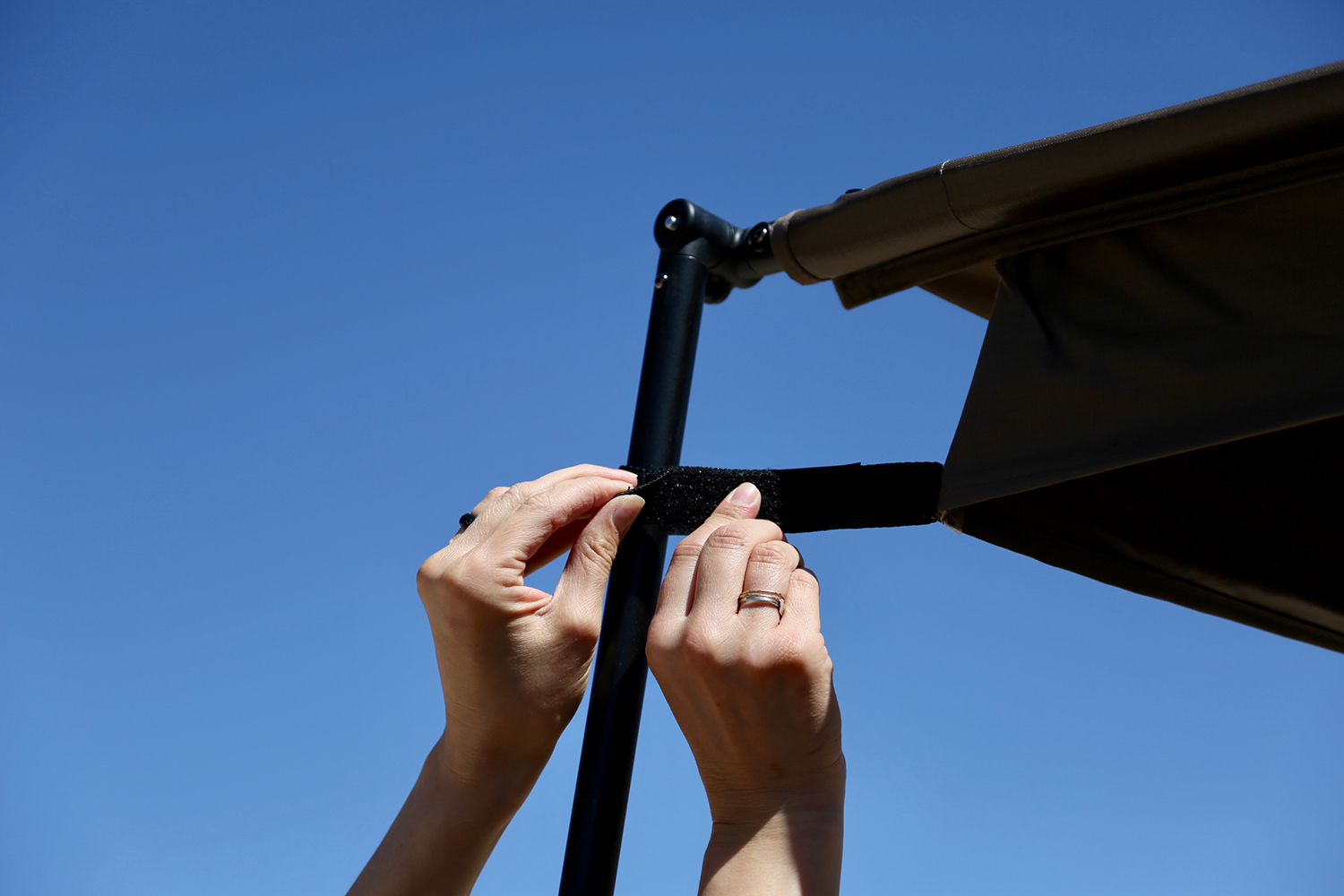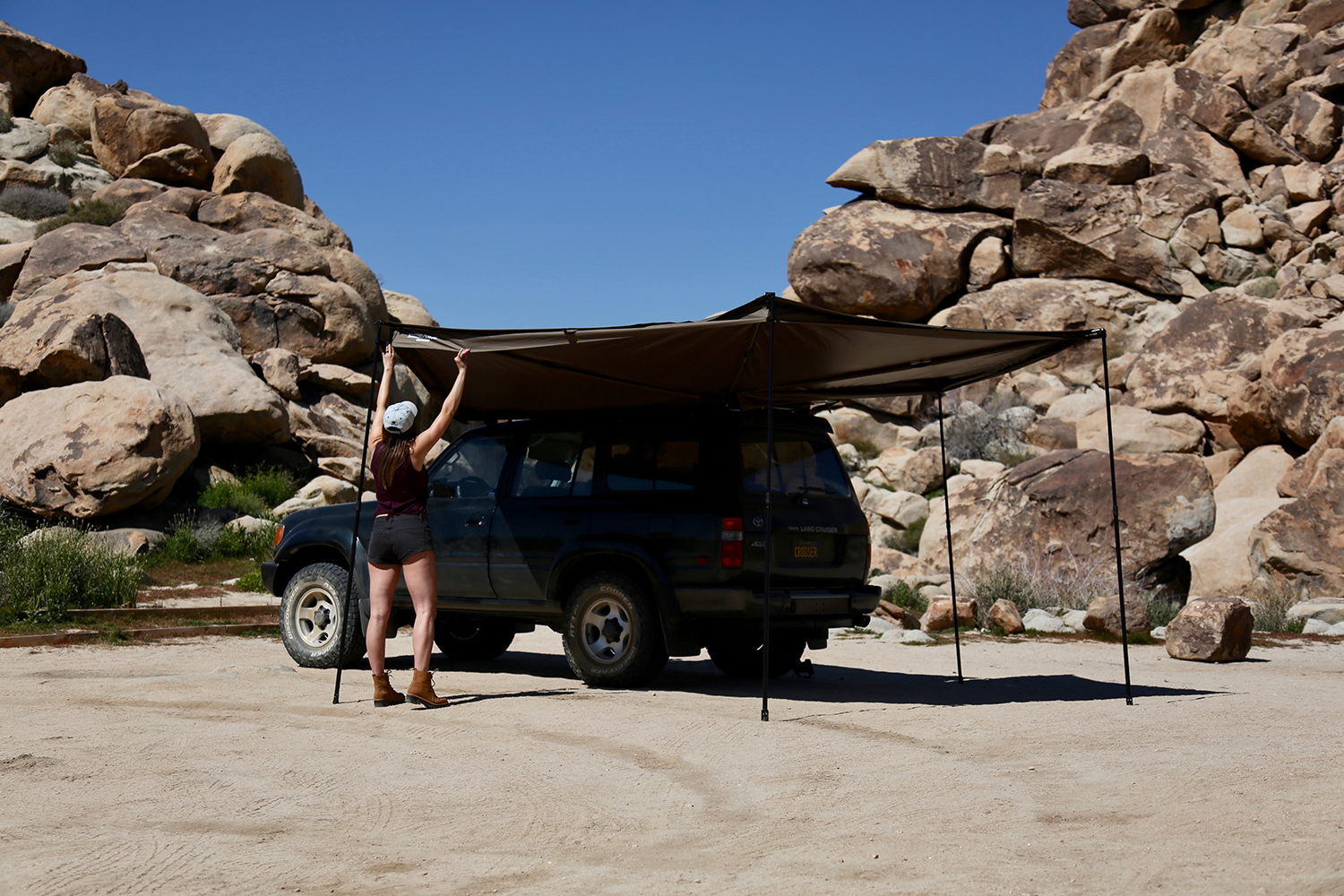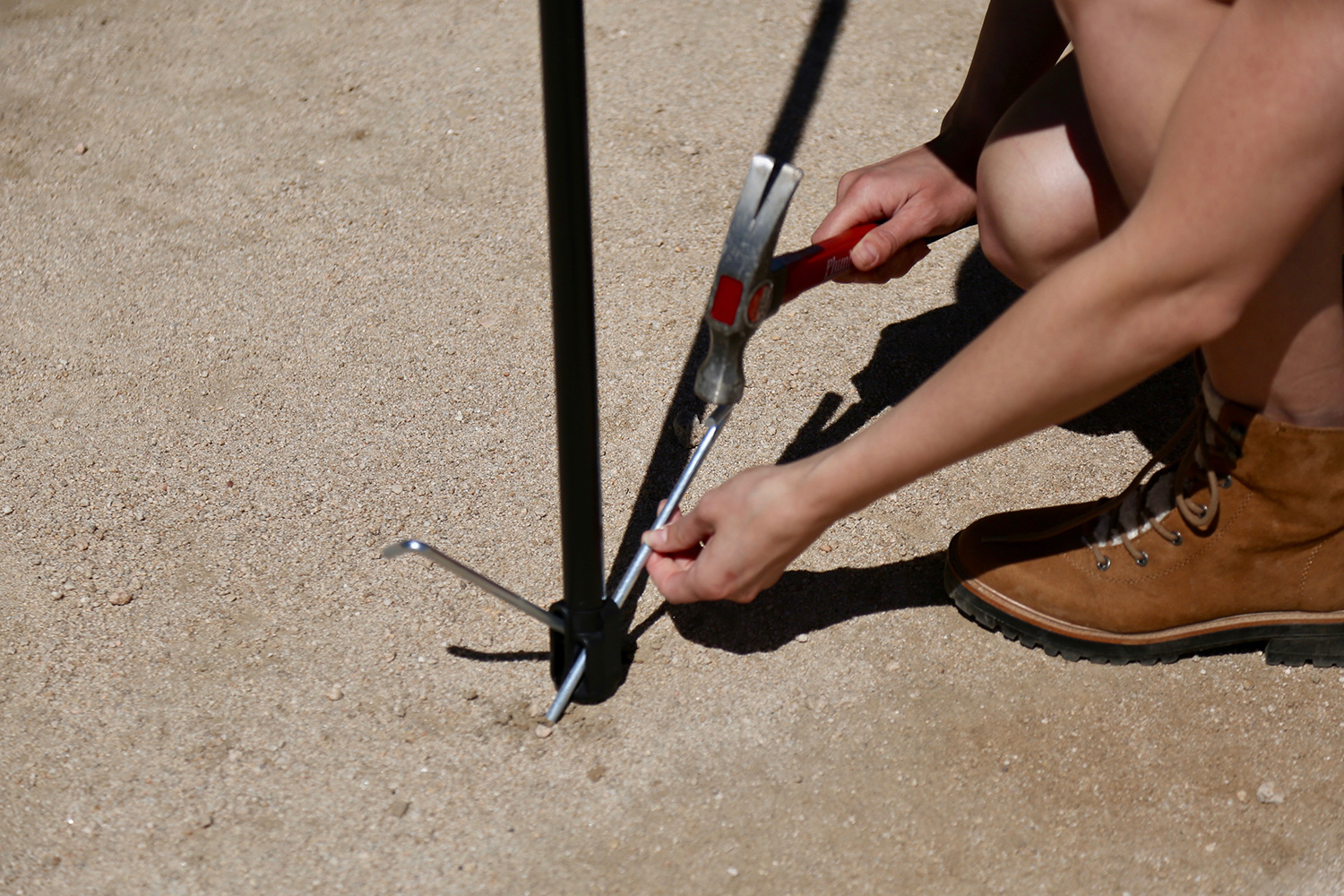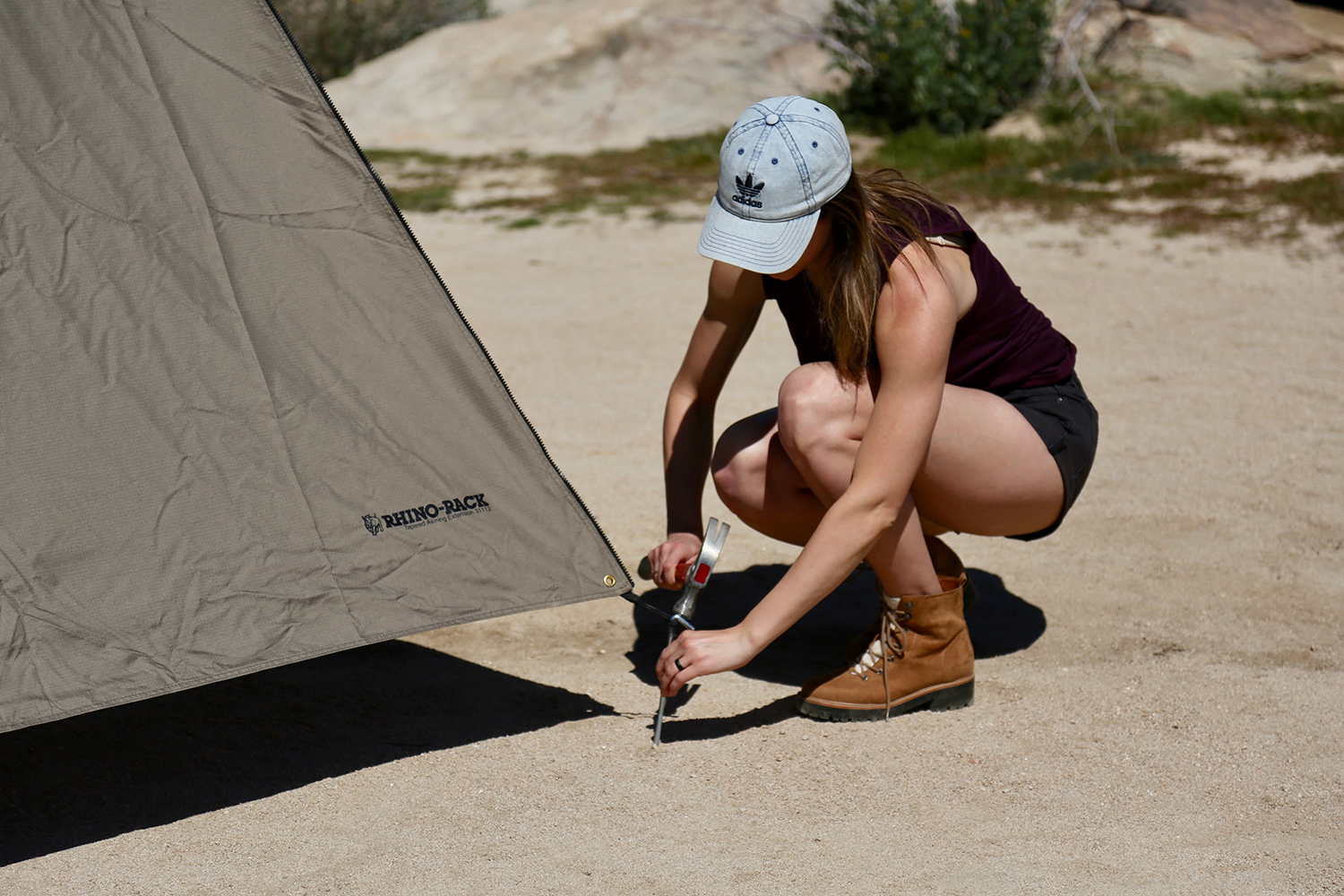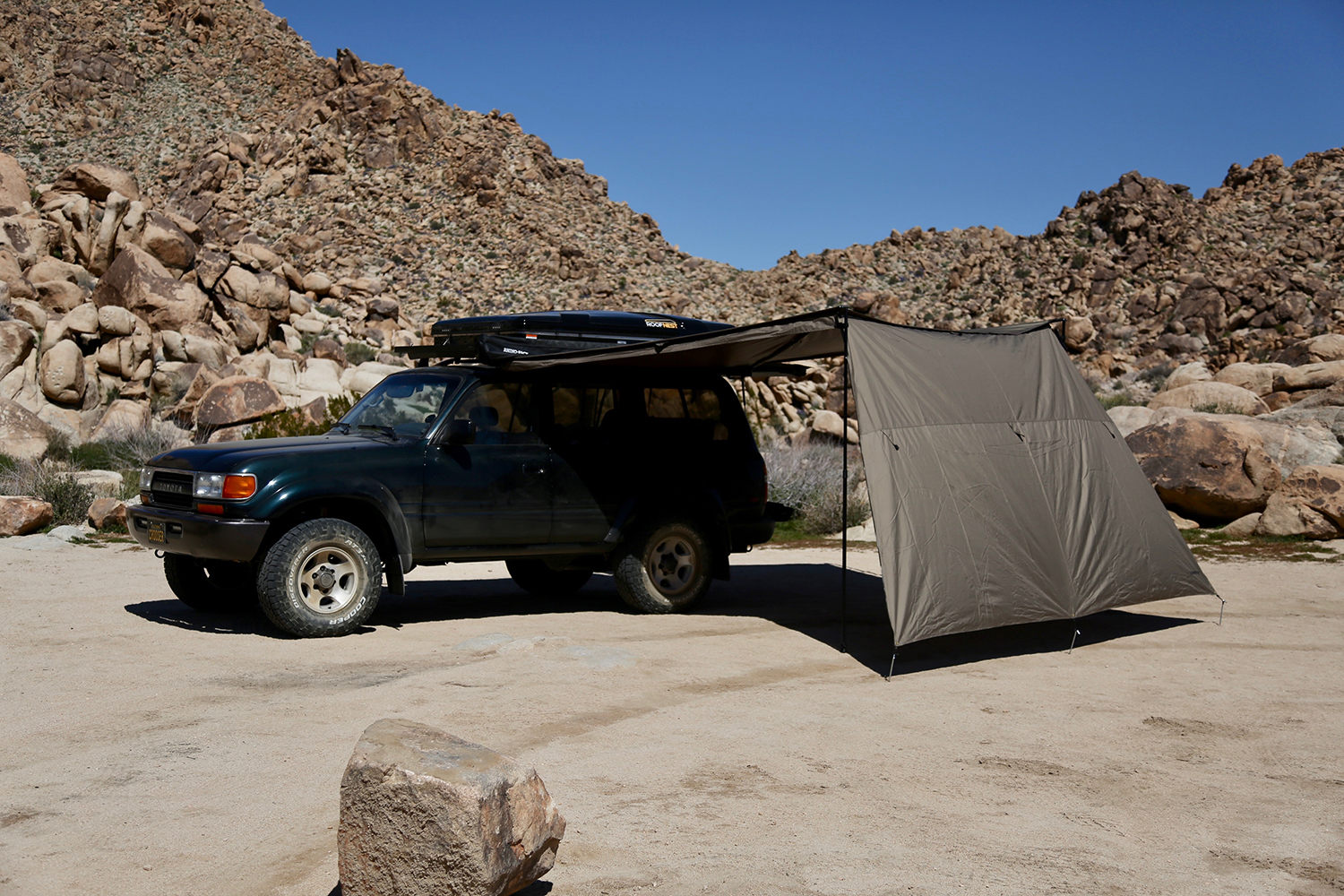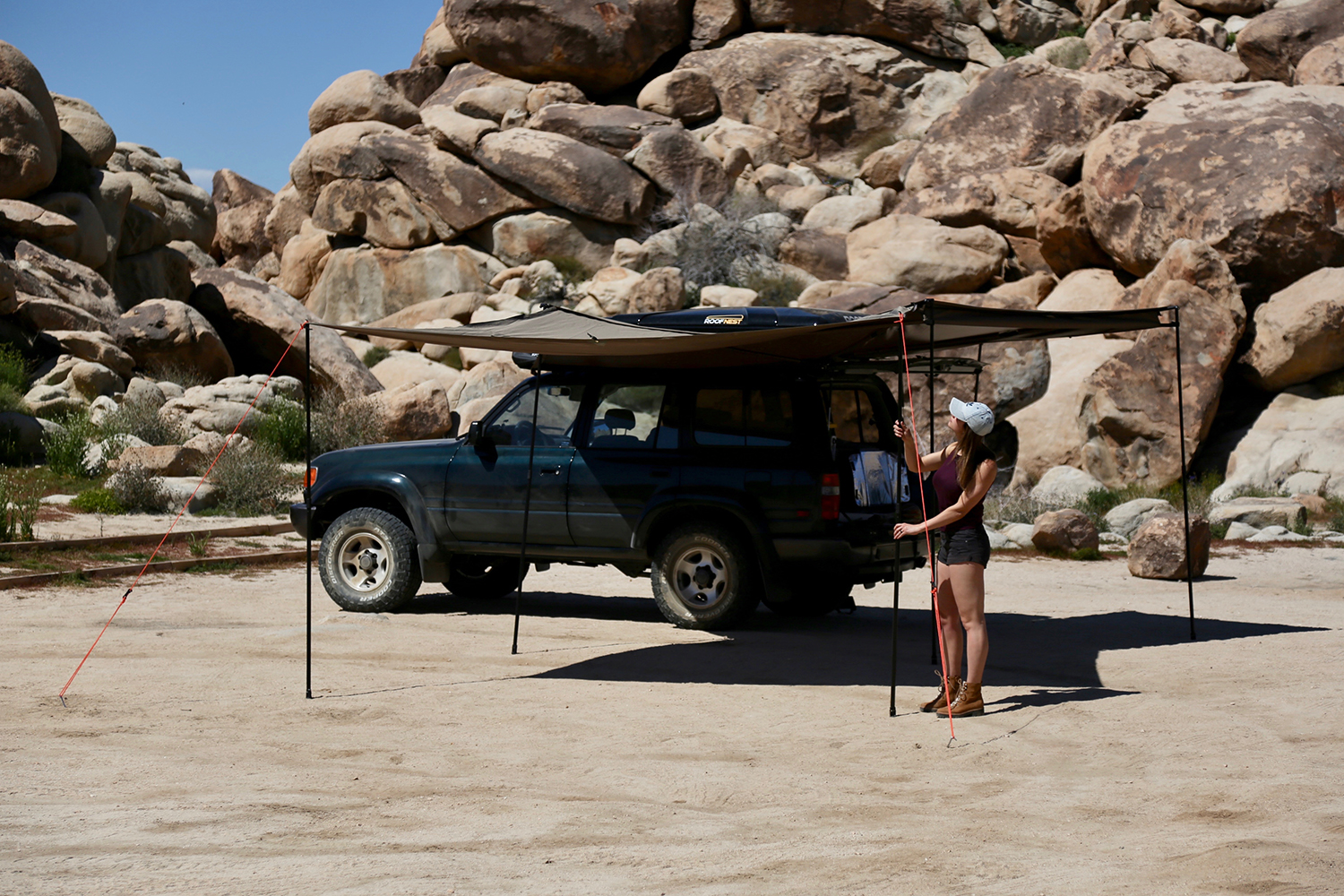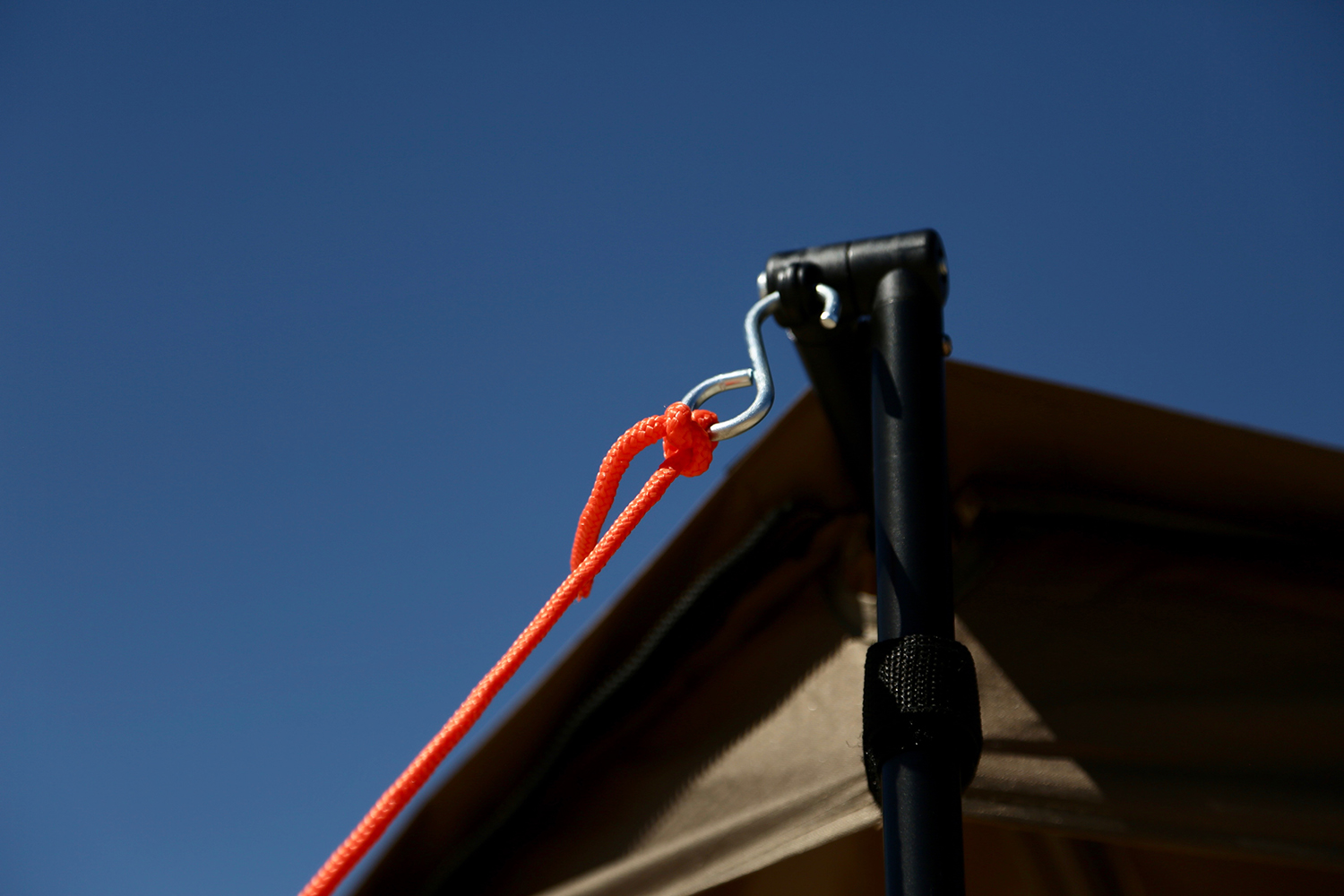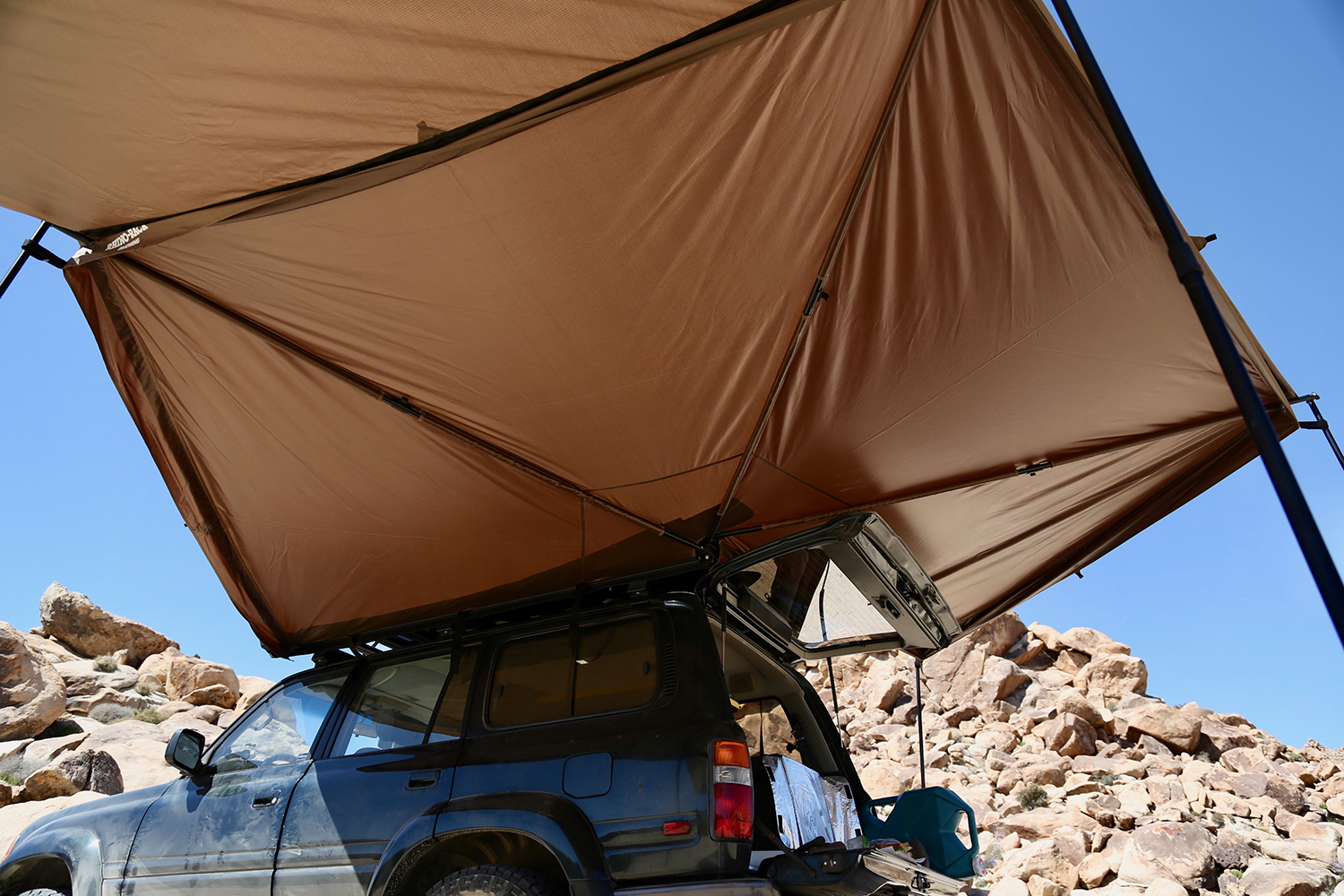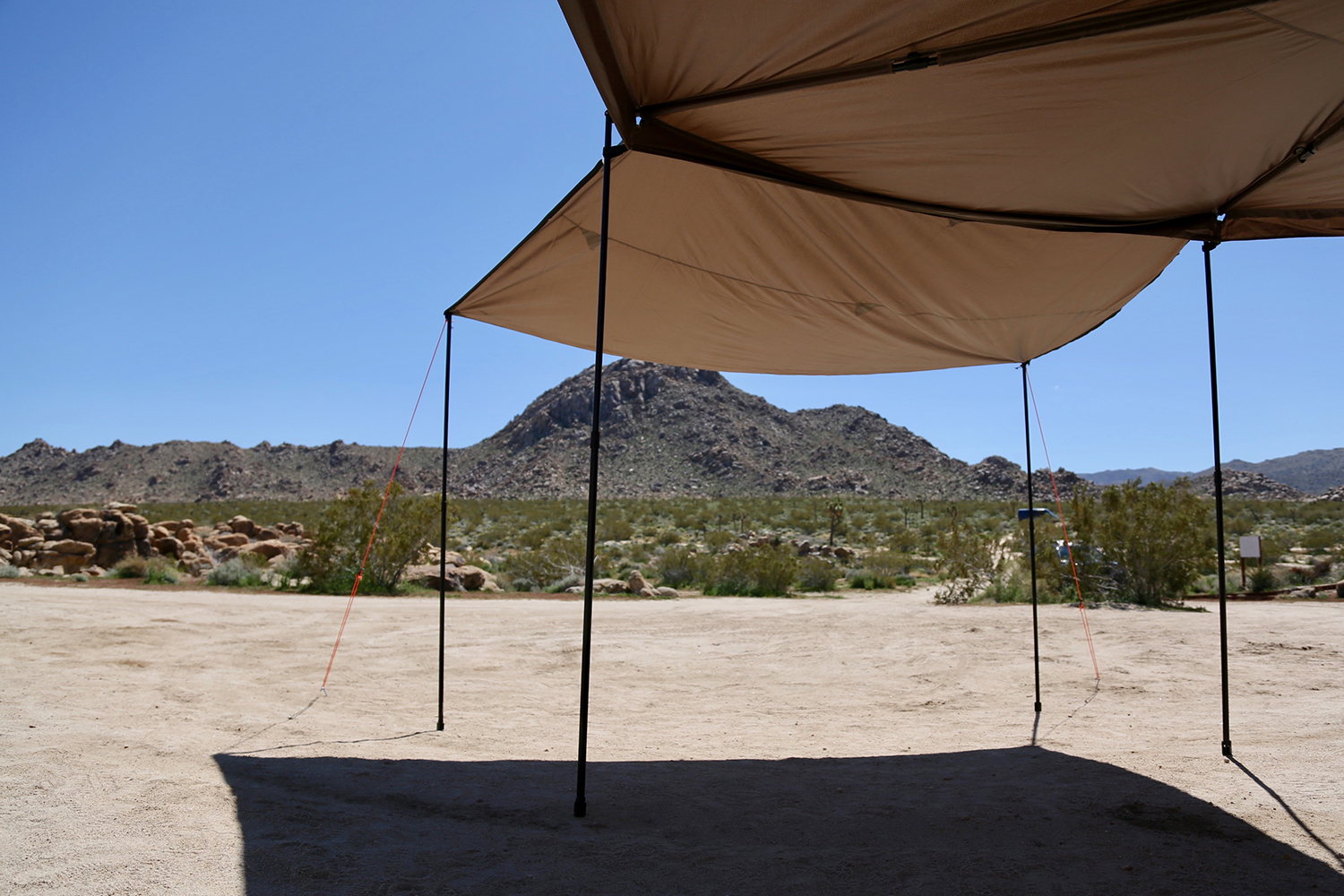Whether you live in a 5,000-square-foot mansion or a 500-square-foot studio apartment, it’s hard to escape the feeling of confinement. Though they provide shelter, our artificial structures limit mind and body from straying too far from responsibility. And so we daydream of adventure – of breathing fresh air, taking in stunning vistas, and, above all, finding room to roam.
Further Reading
But the great outdoors introduce uncertainty, the nemesis of our manicured existence. For some, that sense of unknown is thrilling; for others, it’s damn near terrifying. Thankfully, there are ways to bring a bit of security wherever you travel. We’ve touched on great rooftop tent options that hold up against the elements while offering off-the-ground safety, but equally important to your home-on-the-road setup is an awning.
Hiding in your tent every time you want a reprieve from the sun, wind, or rain can get old quick, which is why retractable awnings have become popular among campers and overlanders. Collapsible into long narrow tubes that mount on side of a vehicle’s roof rack, awnings extend to provide protection overhead or, with wall extensions, to make a mobile shelter.
Following the success of its single-direction Sun Seeker awning, Rhino Rack introduced a new model that spans a full 270-degrees around your vehicle — significantly more coverage than traditional awnings — while retracting into the same slim form. To see whether the Batwing makes camping easier or more complicated, we mounted the awning to an 80 Series Toyota Land Cruiser and headed out for a weekend in Joshua Tree, California.
To see whether the Batwing makes camping easier or more complicated, we mounted the awning to a Toyota Land Cruiser and headed out for a weekend.
Before ever unwrapping the Batwing from its black PVC cover, we note the large, high-quality zippers and thick shielding that we expect will hold up well to years of use. Unzipping the bag reveals four powder coated poles that are magnetically locked in place. Pulling the top pole from its position and walking it around the side of the vehicle releases each successive pole to eventually cover the entire side and rear of the car. Once fully extended, we wrap the strap around a fixed cleat on the opposite side of the roof rack and tighten the strap to make the awning taut.

Though our awning is positioned on the driver’s side of the Land Cruiser, Rhino Rack also offers mounting on the passenger side if you prefer. Two types of included mounts work with any Rhino Rack or Thule roof rack, but Rhino Rack offers alternative mounting hardware work with just about any rack (including our Front Runner Slimline II).
More Overland Gear Reviews
To make the shelter stable, we pull four hidden poles from their clips and unscrew them to release leg extensions. To stabilize the structure, Batwing includes ropes and pegs that can be used in a few different ways and are stored right into the awning cover. The simplest setup method is to hammer two opposed pegs through each pole leg (following the molded pass-throughs), but a strong wind could still unsettle the base. For greater security, Rhino Rack includes ropes that clip into four points along the awning and are pulled tight with ground pegs. Choosing the more secure method means adding another couple minutes of setup, but even so, the whole process takes under 10 minutes by one person. With a bit of practice, we expect we can cut that time down even further.
For added protection, Batwing offers zip-in extensions that can either expand overhead coverage with a pair of included pole legs or be pulled vertical and secured with additional pegs and ropes to make a wall. Like the main structure, these extensions are brilliantly simple and are made up of the same UV50+ rated material endorsed by the Cancer Council. With our work done, our eight-member caravan can enjoy plenty of shade during lunch.
When it’s time to get the party moving again, the Batwing breaks down quickly and easily. In five minutes we’ve pulled and stored the pegs and ropes, retracted and secured the pegs, and folded the awning back into its cover. If the Batwing were more fussy or complex, we might be concerned that we’d hardly use it (we know plenty of overland friends who almost never use their awnings for that precise reason). But the ease of setup and tear down, plus the incredible coverage, means we can rely on the Batwing for all our upcoming adventures.
Some elements of nature will always be a little unsettling, but with tools like the Rhino Rack Batwing Awning, we can stop making excuses and start making plans to explore more.
Editors' Recommendations
- Ram’s 700-HP 1500 TRX Super Truck Will Make You Forget All About the Ford Raptor
- Lotus Caravans’ 2022 Off Grid Travel Trailer Is Designed to Go Almost Anywhere
